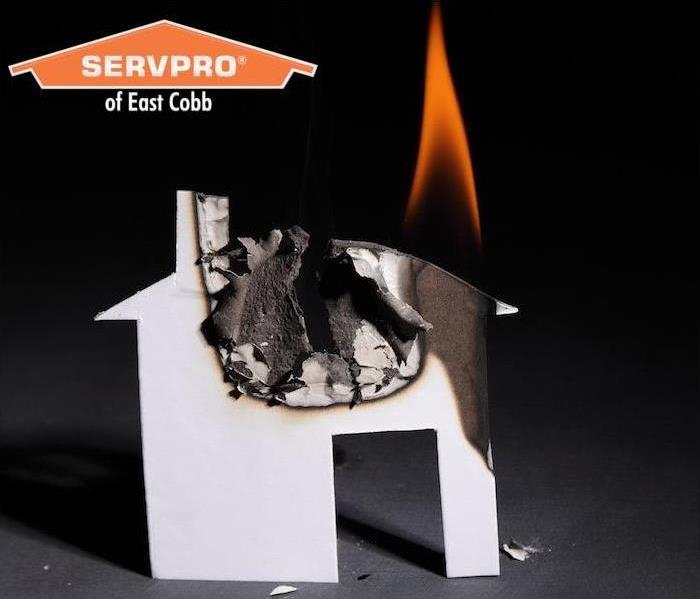There Are 4 Ways to Stop Every Fire | SERVPRO of East Cobb
1/27/2022 (Permalink)
 If your home or business has any damage, SERVPRO of East Cobb is ready around the clock to help you recover.
If your home or business has any damage, SERVPRO of East Cobb is ready around the clock to help you recover.
Reverse-engineering a product or concept can help you understand how it’s built, and fires are no different. Studying the breakdown of what makes fires happen has given scientists insight into how to put them to a halt.
Fires are depicted (theoretically, that is) in the shape of a tetrahedron to represent the fact that every fire is composed of the same four basic elements, in equal and continual measure.
These are the things fires must have in order to begin, and in order to continue to live, and in turn, they also represent the four ways fire can be extinguished.
The 4 Things a Fire Needs to Live
- Fuel - A fuel source must be present for a fire to start—not so much in the way you may think of fuel as something you put in your car (although those fuels are certainly flammable), but more in the way that you fuel your body by consuming food. Every fire consumes something, be it organic or inorganic.
- Heat - Fires start in part because their fuel sources reach a temperature at which combustion can occur. Every fuel source’s flash point is different, but all fuel sources have a definite temperature at which combustion becomes inevitable.
- Oxygen - Home fires at night are particularly dangerous to sleeping individuals, because fires compete for the very same oxygen we breathe. Many whose homes catch on fire simply never wake from their sleep because of oxygen deprivation.
- Chemical Chain Reaction - The fuel, the heat and the oxygen all combine in a chain reaction, which perpetuates the reaction between them. Without intervention, this reaction will last forever, provided the other components remain in supply.
The 4 Ways to Stop a Fire
- Cool It - The most common way to stop a fire is to cool it, probably with water. Cold water in heavy amounts quickly brings down the temperature of a fire’s fuel source, bringing thermal balance between the rate of rising heat and the cooling of the material being consumed.
- Smother It - Oven and stove fires are perfect examples of how smothering works. A stovetop fire can be smothered (aka deprived of oxygen) by placing a lid or pan on top of the pan whose contents are on fire, and an oven fire can be smothered simply by leaving the door closed, letting the fire consume the oxygen inside, and dying out.
- Starve It - Removing the fuel source from a fire’s path, or cutting the fire off from being able to reach new fuel, causes the fire to die by leaving it with nothing to burn. This sometimes feels like a “win” for the fire, in cases where homes are destroyed but the causal fires are kept from spreading by defensible space, such as sidewalks, around them.
- Interrupt the Chain Reaction - Halons and other gasses can be injected into the atmosphere of a fire with a mission to disrupt the fire cycle and handcuff the fire’s effectiveness. When the reaction remains broken, the fire can’t perpetuate itself and it dissipates.
*If the fire tetrahedron makes a wreck of your home or business, we’re ready around the clock to help you recover. Contact SERVPRO of East Cobb at (770) 424-0400 at any time for fast, thorough cleanup and recovery after a fire or visit www.SERVPROeastcobbga.com for more information on residential and commercial fire restoration services.






 24/7 Emergency Service
24/7 Emergency Service